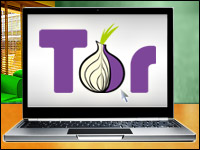
Sun Microsystems on Tuesday made good on its promise to deliver its OpenSPARC T2 register transfer level (RTL) processor design to the free and open source community using the GNU General Public License (GPL).
The OpenSPARC T2 is the open version of Sun’s UltraSPARC T2, a processor that features eight cores and eight threads per core running the Solaris 10 operating system. Sun released OpenSPARC T1, the open version of its UltraSPARC T1 processor, in March of last year.
“Open sourcing the UltraSPARC T1 processor design was such a new concept it created some angst and a fair amount of debate before we pulled the trigger,” said David Yen, executive vice president of microelectronics for Sun. “But there was no debate associated with T2; we’ve seen the success of open sourcing hardware, and the interest it has created in the developer, university and customer communities.”
Academic Support
Along with the release of the OpenSPARC T2, Sun also announced that five major universities are now official OpenSPARC Technology Centers of Excellence: the University of California at Santa Cruz, the University of Texas at Austin, the University of Michigan at Ann Arbor, the University of Illinois at Urbana-Champaign and Carnegie Mellon University.
Each Center of Excellence has a minimum two-year commitment, during which time it will execute chip design research and course work based on Sun’s chip multi-threading (CMT) design, the company said.
“Thanks to the T1 design and other tools available to us through the Illinois Center of Excellence for OpenSPARC technology, faculty and students are performing research on processor reliability and architecture that would be impossible under any other scenario,” said Josep Torrellas, professor of computer science at the University of Illinois. “For academics, this is an order of magnitude improvement in research tools. Computer architecture researchers everywhere should check it out.”
Awards Program
More than 6,500 copies of the OpenSPARC T1 processor have been downloaded since its debut in March 2006, Sun said. The RTL files for both it and the OpenSPARC T2 processor can be downloaded from Sun.
With its OpenSPARC technology program, Sun aims to help community members build on proven technology at low cost and drive down the cost of implementing designs into different technologies and products, it said.
Last week, Sun announced the multiyear Open Source Community Innovation Awards Program, designed to foster innovation and recognize some of the most interesting initiatives within Sun-sponsored open source communities worldwide. OpenSPARC was one of the six communities chosen to participate in the program’s first year, along with GlassFish, NetBeans, OpenJDK, OpenOffice.org and OpenSolaris.
Overarching Goals
Sun’s OpenSPARC initiative is following a precedent set by IBM with its efforts to promote the Power Architecture through Power.org, Charles King, a principal analyst at Pund-IT, told LinuxInsider.
“Power.org has been quite successful and has led to some really interesting partnerships for IBM with companies like Freescale and Samsung,” King noted. “It has also helped the Power Architecture find its way into markets that are somewhat unusual compared with IBM’s traditional focus areas.”
After a rough few years, Sun must hope to achieve similar results with its effort, King explained.
“The surest way forward for the preservation and continued evolution of the UltraSPARC architecture is to get other vendors to adopt it,” he noted. “This is a very smart strategy.”
Shrinking Margins
A situation facing all microprocessor developers is that products based on their microprocessors are becoming commoditized, King added. Given the steep costs associated with developing and maintaining a microprocessor architecture, that pressure tends to shave profit margins, he said.
As a result, “getting out there and exploring and opening up as many opportunities as possible for microprocessor products is an important goal for every vendor,” he said. “Sun is right in line with this.”
On a higher plane, of course, working with the open source community is simply a part of Sun’s philosophy, Roger Kay, president of Endpoint Technologies, told LinuxInsider.
“It makes perfect sense to me that they’d support at the silicon level their open source philosophy,” Kay said.
Beyond Just Software
Indeed, the OpenSPARC effort is an important illustration that the open source model can apply beyond just the world of software, noted Raven Zachary, senior analyst and open source practice head with the 451 Group.
“Most of us think of open source as being a software issue, but the concepts of transparency and collaboration can apply to other areas as well, including hardware and chip design,” Zachary told LinuxInsider.
Nevertheless, open source hardware appeals to a smaller audience because of the inherent barriers that exist in producing the technology, Zachary added.
There has certainly been academic interest in the processor, but “as far as I can tell, there’s been limited industry pickup of the OpenSPARC chip,” Zachary said.
Now that Sun has been working on the effort for a good two years, however, “we’re now past the point where you might think it could be a marketing gimmick,” Zachary concluded. “We’ll see whether this might help to generate greater commercial demand.”




















































